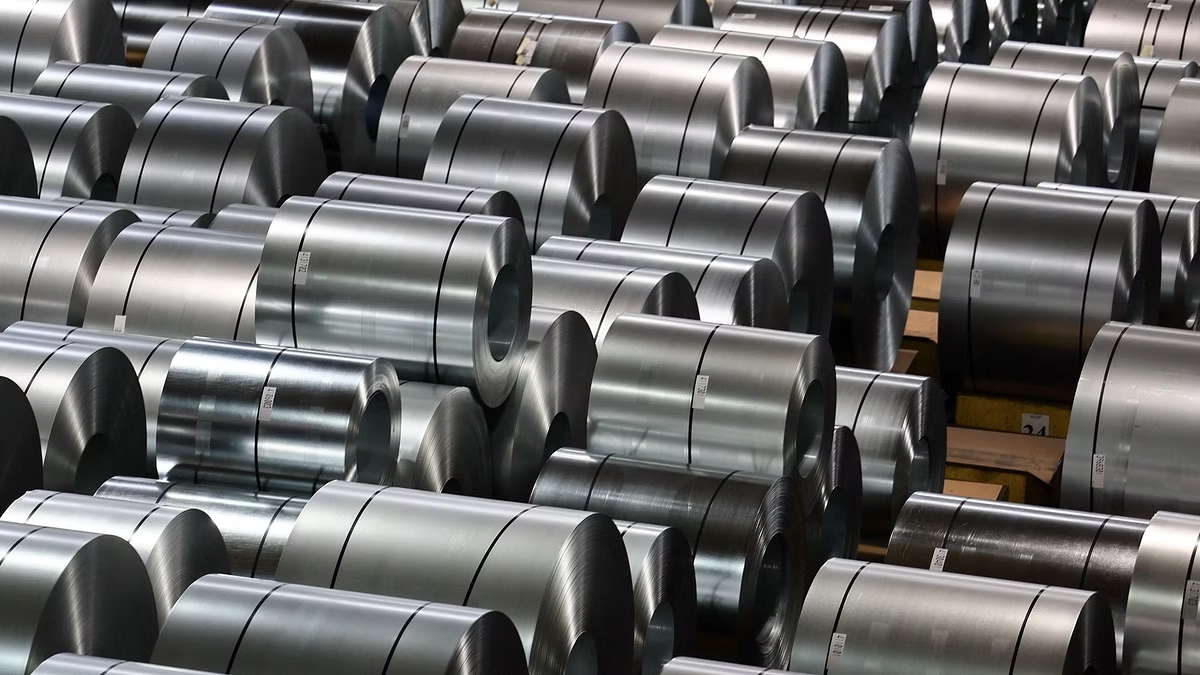India–US Trade Tensions Rise Over Steel and Auto Tariffs NMDC Limited reports a 38% drop in Q4 FY24 consolidated net profit RINL to Raise $23 Million Through Land Sales Amid Crisis

Steel majors expect the budget to boost economic growth and benefit people by supporting critical industries such as steel, infrastructure, railways, and renewable energy. In her budget statement on February 1, Finance Minister Nirmala Sitharaman said that the government has set aside ₹11.1 lakh crore for capital expenditures in the upcoming fiscal year. Although this is 11.1% more than the budget forecast for the current year, it is 16.9% more than the amended projection.
Prominent industry figures have voiced their excitement, pointing out the potential for significant contributions to India's development. These individuals include Tata Steel Managing Director TV Narendran, Jindal Steel, and Indian Steel Association President Dilip Oommen.
Financial Implications
Industry executives have praised the budget's emphasis on speeding the construction of multiple infrastructure types, including digital, social, and physical aspects, as promising. The dedication to upholding fiscal discipline and aiming for a 5.1% budget deficit in FY 24–25 has been well-received. This pledge is anticipated to boost confidence among investors and the sector, fostering an atmosphere favourable to long-term growth.
The Centre planned to spend ₹10.01 lakh crore on capex in 2023-24. However, because states have not used the CAPEX loan scheme as much as expected, it has fallen short of the target by ₹50,715 crores. The Special Assistance as Loan to States for Capital Expenditure scheme for 2023–24 was originally budgeted for ₹1.3 lakh crore; however, the revised estimate for the same is ₹10.56 lakh crore. The government has set aside ₹1.3 lakh crore for the 2024-25 fiscal year to provide interest-free loans to states for capital expenditures.
Industry response and commitments
The budget proposes ₹11.1 lakh crore as capital expenditure for the upcoming fiscal year, up 11.1% from the current year's estimate. Industry observers, such as Dilip Oommen, president of the Indian Steel Association, point out that FY24 spending is expected to be close to ₹9.5 lakh crore, representing a significant 17% actual rise. This implies a concrete commitment to accelerating infrastructure development and strengthening the steel sector.
"The emphasis on building all forms of infrastructure – digital, social, and physical – at an unprecedented pace is promising. Fiscal deficit target for FY 24-25 at 5.1% and continuous fiscal prudence are indeed laudable," Oommen added.
"The Union Budget has proposed several forward-looking initiatives that align with our national goals and are likely to drive economic growth, upliftment of the people, and support key sectors such as steel, infrastructure, railways, and renewable energy," Naveen Jindal, Chairman of Jindal Steel and Power Ltd (JSPL) said. The inclusion of additional rail corridors for energy, cement, and minerals is likely to improve connectivity and strengthen the Indian economy, he said. "Commits to playing a pivotal role in this, contributing to India's development," stated Jindal Steel in a tweet.
According to TV Narendran, Managing Director of Tata Steel, the budget is a "welcome step" that might have a multiplier effect on the country's economy as a whole. The PM Gati Shakti Yojana's pledge to build three economic railway lines and expand rural housing have been cited as key initiatives to boost steel demand, encourage job creation, improve connectivity, and improve logistics.
Atul Bhatt, CMD of Visakhapatnam brd-RINL, responded to the Union Budget 2024–2025 by stating that the emphasis on infrastructure development will offer the Indian steel sector a much-needed boost. The increased capex outlay for infrastructure, the construction of two crore homes under the PM Awas Yojana, the railway corridor, and new airports will improve the industry's capacity utilisation.
Also Read : Navigating the Steel Market: Prices Recover, But Capacity Pressures Loom Steel’s Decade of Dominance: Forecasts, Drivers & Strategic Moves (2024–2033)